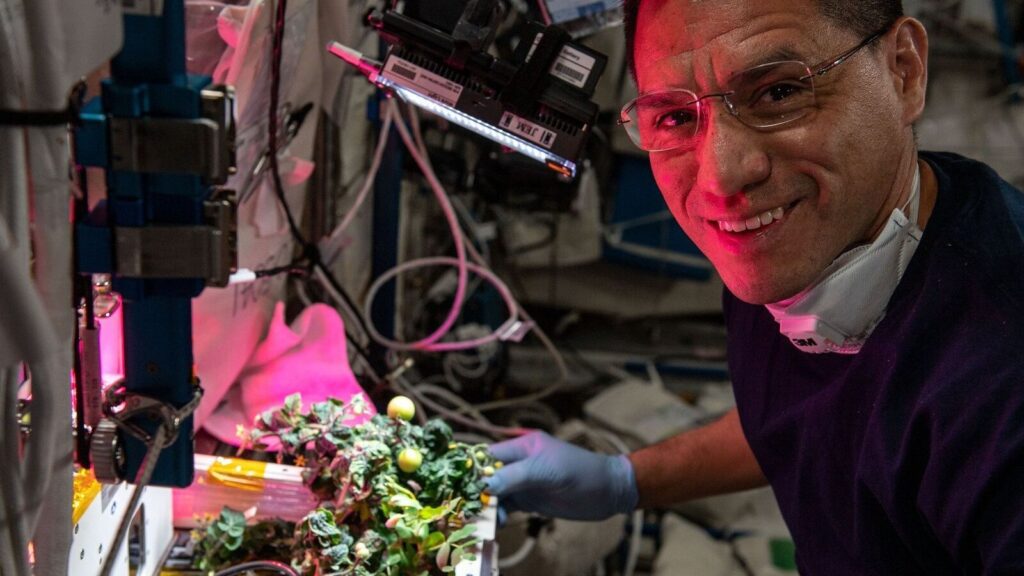NASA astronaut Frank Rubio recently shared the story of the “two rogue tomatoes” that went missing aboard the International Space Station (ISS) about a year ago.
Because of the lack of gravity, Rubio accidentally lost fruit while harvesting for the Exposed Root Orbital Testing System (XROOTS) experiment, a soilless plant experiment.
Also read: Earth will be in close contact with more than 100 asteroids the size of Vatican City or Burj Khalifa in 2023: NASA’s top targets revealed
He conducted this experiment on the space station in 2022. Record-breaking 371-day mission. These were the first tomatoes grown in space or harvested on the ISS.
Check out the images here
in interview In October, Rubio said that when he lost his tomatoes, “many people” accused him of “probably” eating them.
“I put (the tomatoes) in a little bag and one of the crew members did it,” Rubio said, recalling the incident. [an] When I went to an event with some school children, I thought it would be cool to show them, “Hey, everyone, this is the first tomato harvested in space.” ”
Also read: End of 2023: Top 5 times NASA and ISS shared Earth star poses for space kaleidoscope
“Then I came back feeling pretty confident that I had Velcroed it where it was supposed to be, and it was gone,” Rubio added. He estimates he spent eight to 20 hours of his time searching for the lost fruit.
“The reason I wanted to find it was to prove something like, ‘I don’t eat tomatoes,'” he said, explaining that he ended up not finding any tomatoes. “The proud moment of harvesting the first tomato in space turned into a self-inflicted wound of losing the first tomato in space,” he said.
Also read: NASA research discovers energy source that can generate life on Saturn’s icy moon
Several months after Rubio returned to Earth, the crew of Expedition 70 solved this strange case. Almost a year after the tomato disappeared, “the tomato was found dehydrated and slightly crushed.” “Aside from some discoloration, there was no visible microbial or fungal growth,” NASA said in a statement.
The crew member announcing the news joked that perhaps Mr. Rubio didn’t eat the tomatoes, as expected.
Will the tomato return to Earth?
“The rogue tomatoes found in the XROOTS experiment have been discarded and will not be returned to Earth for analysis,” NASA said.
Why is it important to grow plants in space?
Growing food on the International Space Station is one of many research investigations underway for long-duration spaceflight missions to the Moon and Mars, according to NASA.
The US space agency added that the benefits of growing plants in space go beyond sustainability and providing food and other services on future space missions. In addition to these, astronauts report that time spent gardening has psychological benefits, improving the quality of life in space and boosting morale.
“Research on the space station is advancing the technology and scientific knowledge needed to successfully grow plants in space and help humanity push the boundaries of space travel. It will also aid efforts to improve plants grown for other important uses,” the space agency said.
Milestone alert!Livemint tops the charts as the world’s fastest growing news website 🌏 click here To know more.

